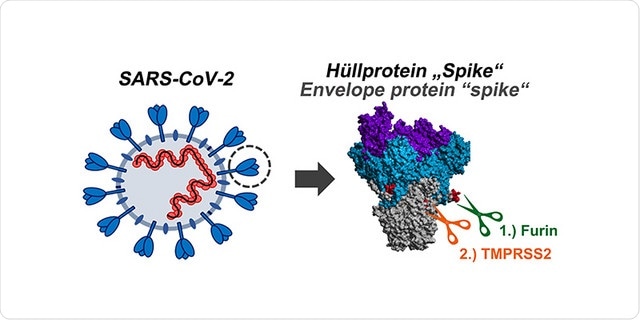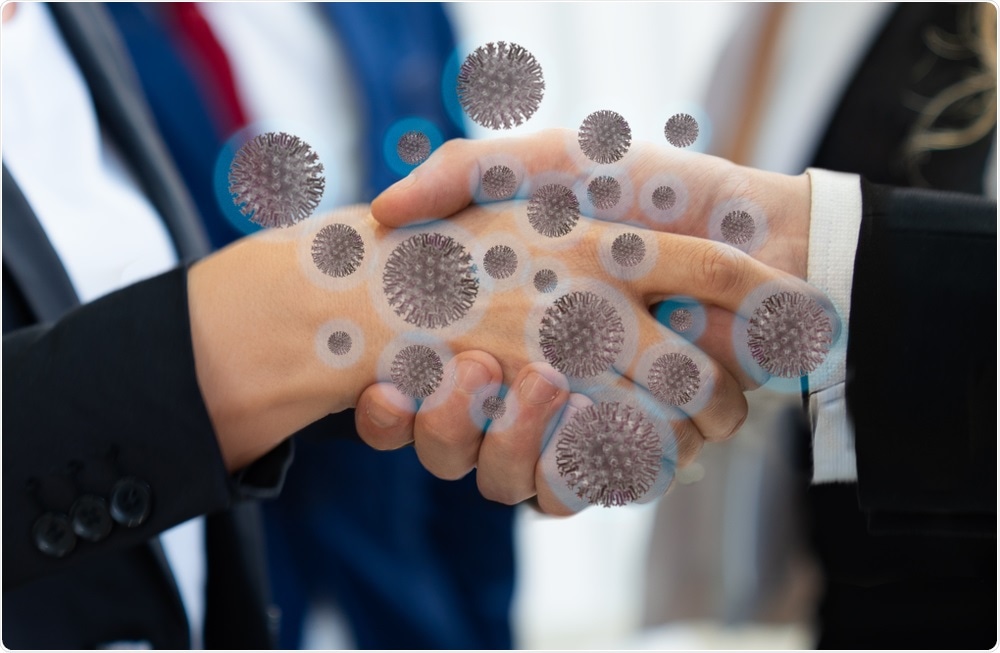Identifying the Starting Points for COVID19 Treatment
by Thought Leaders
Dr. Markus HoffmannGerman Primate Center
News-Medical spoke to researchers from the German Primate Center on their research in determining the activation sequence of the SARS-CoV-2 virus.
Why did you choose to research COVID-19 and possible treatments?
We chose to work on COVID-19 because we have a long-standing interest in coronavirus-host cell interactions and their contribution to viral spread and pathogenesis.
Moreover, we seek to target these interactions for antiviral therapy.
.jpg)
Image Credit: GEMINI PRO STUDIO/Shutterstock.com
How does the viral spike protein help the virus to enter the body?
The viral spike protein mediates the binding of SARS-CoV-2 to host cells. Moreover, it facilitates the fusion of the viral membrane with a cellular membrane, which allows the delivery of the viral genome into the cell - a prerequisite to infection.
Why is understanding the activation sequence of this virus so critical?
Understanding the activation sequence is important because it can define targets for antiviral intervention.
For instance, the cellular protease TMPRSS2 activates SARS-CoV-2 by cleaving the viral spike protein and a TMPRSS2 inhibitor, camostat mesylate, blocks infection of lung cells.
Can you describe the research you carried out that led to your discovery?
We established a surrogate system for SARS-CoV-2 entry into target cells that is characterized by a high level of biosafety and allows obtaining quantitative results in a fast and convenient fashion.
We used this system to determine whether SARS-CoV-2 entry depends on cellular factors also used by other coronaviruses for entry.
We obtained a positive answer to this question and then confirmed our results with authentic SARS-CoV-2.

How does the cellular enzyme furin allow the virus to spread throughout the body without leaving the host cell?
Furin cleaves the spike protein within infected cells. When the cleaved spike protein is transported to the cell surface it can initiate fusion of the infected cell with uninfected neighboring cells in cell culture models.
However, it is at present unknown whether this mechanism contributes to viral spread in humans.
In your research, you also noticed that the activation sequence was similar to ones observed in highly pathogenic avian influenza viruses. How are their activation sequences similar, but the hosts that they infect so different?
This is because the activation sequence alone does not control which hosts can be infected by a virus.
Do you believe that your research will help in developing a potential vaccine or therapy for COVID-19?
We feel that our discovery that the protease inhibitor camostat mesylate blocks SARS-CoV-2 infection of lung cells might help to establish new treatment options for COVD-19.
In fact, it is currently being determined within clinical trials whether camostat mesylate can be used for COVID-19 treatment.
How could your research also help in understanding the transmission of viruses?
Our research indicates that the highly cleavable so-called S1/S2 cleavage site in the spike protein of SARS-CoV-2 is essential for infection of human lung cells. This cleavage site is not present in most other closely related coronaviruses.
Moreover, if the suboptimal cleavage site found in these viruses is introduced into the spike of SARS-CoV-2 then viral entry into lung cells is no longer possible. Thus, the acquisition of a highly cleavable S1/S2 site was probably a key requirement for SARS-CoV-2 to spread in the human population.
As a consequence, the presence of such a site in newly emerging coronaviruses could be an indicator of high human-human transmissibility.

Image Credit: frank60/Shutterstock.com
What are the next steps in your research into COVID-19?
Moreover, we would like to identify new and more potent inhibitors of TMPRSS2 and SARS-CoV-2 entry and we would like to assess whether the virus can gain resistance against these inhibitors.
Where can readers find more information?
Read about the infection biology unit here
Read some of their publications below:
Watch a video on preventing the spread of SARS coronavirus-2 in humans here